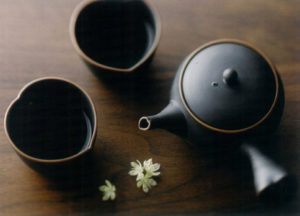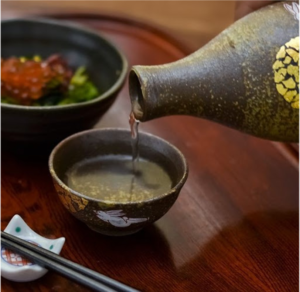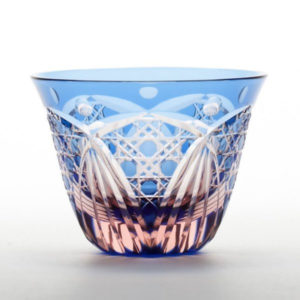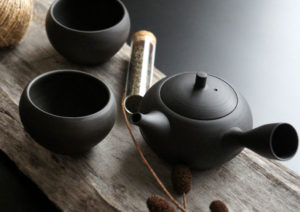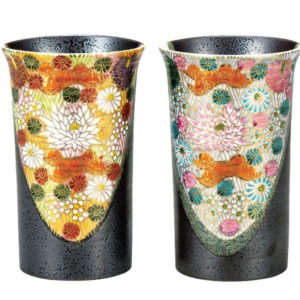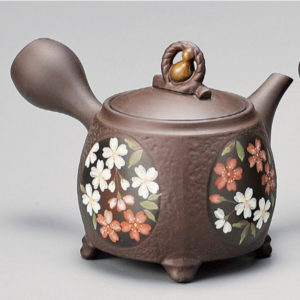How to choose and care for Japanese Kyusu teapots
A Japanese Kyusu teapot that is indispensable for drinking freshly brewed Japanese tea. In addition to the classic Tokoname-yaki Japanese Kyusu teapot, there are many fashionable Japanese Kyusu teapots with unique handles and tea strainers, which are old-fashioned tools, but Japanese Kyusu teapots are updated daily. Recently, Kyusu teapots made of hard-to-break resin and heat-resistant glass are also gaining popularity. This time, we will introduce recommended items of such popular Japanese Kyusu teapot products. First of all, I will explain how to choose a Japanese Kyusu teapot, so please refer to it and find the perfect Kyusu teapot for you. At the same time, please refer to the care and […]
Beliebt SAKE-Flasche / SAKE-Becher empfohlenes Ranking
Wir stellen SAKE-Flaschen / SAKE-Becher vor, die von den Mitarbeitern des tokyostore ausgewählt wurden.Es ist in einem Ranking-Format organisiert, so dass Sie auf einen Blick die wirklich beliebten SAKE-Flaschen / SAKE-Becher sehen können.Wählen Sie Ihre Lieblings-SAKE-Flasche / SAKE-Tasse, die Sie noch mehr zum Trinken aufregt und gleichzeitig die Eigenschaften der SAKE-Flasche / SAKE-Tasse beibehält. SAKE-Flasche/SAKE-Becher, die den Geschmack und das Aroma von SAKE verbessert Durch die Wahl einer SAKE-Flasche / eines SAKE-Bechers, der für Ihren Lieblingssake geeignet ist, wird die Köstlichkeit und das Aroma des Sake verstärkt.Hier stellen wir Ihnen die Beliebtheitsrankings und Eigenschaften von SAKE-Flaschen / SAKE-Bechern vor.Darüber hinaus wird erklärt, wie man eine SAKE-Flasche / einen SAKE-Becher gut […]
Popular SAKE bottle / SAKE cup recommended ranking
Introducing SAKE bottles / SAKE cups selected by the tokyostore staff.It is organized in a ranking format, so you can see at a glance the really popular SAKE bottles / SAKE cups.Choose your favorite SAKE bottle / SAKE cup that will make you even more excited to drink while keeping the characteristics of the SAKE bottle / SAKE cup. SAKE bottle/SAKE cup that enhances the taste and aroma of SAKE By choosing a SAKE bottle / SAKE cup that is suitable for your favorite sake, the deliciousness and aroma of the sake will be enhanced.Here, we introduce the popularity rankings and features of SAKE bottles / SAKE cups.In addition, it […]
Was ist Edo Kiriko, ein traditionelles japanisches Handwerk?
Edo Kiriko ist ein Oberbegriff für geschliffene Glasprodukte, die in Edo / Tokio vom Ende der Edo-Zeit bis zur Gegenwart hergestellt wurden.Im Jahr 1985 wurde es von der Stadtregierung von Tokio als traditionelles Handwerk eingestuft und im Jahr 2002 vom Minister für Wirtschaft, Handel und Industrie als traditionelles Handwerk zertifiziert. Die Japaner waren gut im Umgang mit Licht und Schatten, vor allem mit natürlichem Licht, und hatten ein feines Gespür dafür, das Sonnenlicht mit Traufen und Shoji zu mildern und in den Raum zu bringen. "Edo Kiriko" ist vollgepackt mit Techniken, die nur durch die Kenntnis des Lichts erreicht werden können, wie z. B. das Brechen des Lichts mit einer […]
What is Edo Kiriko, a traditional Japanese craft?
Edo Kiriko is a general term for cut glass products produced in Edo / Tokyo from the end of the Edo period to the present.In 1985, it was designated as a traditional craft designated by the Tokyo Metropolitan Government, and in 2002, it was certified as a traditional craft designated by the Minister of Economy, Trade and Industry. The Japanese were good at handling light and shadows, especially natural light, and had a keen sense of softening the sunlight with eaves and shoji and taking it into the room. "Edo Kiriko" is packed with techniques that can only be done by knowing the light, such as refracting light with a […]
Empfohlene Art und Weise, die Kyusu Teekanne nach dem Gebrauch zu waschen!
Da die Kyusu Teekanne nur Tee kocht, wird sie selten schmutzig genug, um mit Spülmittel abgerieben zu werden.(Der Schmutz, der sich bei der täglichen Nutzung ansammelt, ist ein anderer.) Für die tägliche Pflege mit Wasser oder heißem Wasser abspülen. ◎ Wichtige Punkte danach!Sie können es natürlich trocknen, also trocknen wir das Innere des Kyusu vollständig, bevor wir es verwenden.Wenn Sie es mit verbleibender Feuchtigkeit weiter verwenden, wachsen Keime, so dassSei vorsichtig.Wenn er vollständig getrocknet ist, können auch die restlichen Teeblätter getrocknet und sauber entfernt werden. Die tägliche Pflege ist ganz einfach!Natürlich sammelt sich der Schmutz, der nicht zu sehen ist, nach und nach an, indem man ihn einfach mit Wasser […]
Recommended way to wash the Kyusu teapot after use!
Since the Kyusu teapot only makes tea, it rarely gets dirty enough to be scuffed with detergent.(The dirt that accumulates during daily use is different.) Rinse with water or hot water for daily care. ◎ Important points after that!You can dry it naturally, so let's dry the inside of the kyusu completely before using it.If you continue to use it with moisture remaining, germs will grow, sobe careful.When it is completely dried, the remaining tea leaves may also be dried and removed cleanly. Daily care is very easy!Of course, the dirt that cannot be seen will accumulate little by little just by flushing it with water.That is the tea astringency […]
Kennen Sie das traditionelle japanische Handwerk "Japan Kutani"?
"Kutani-Ware" wurde auch von Leuten gehört, die sich nicht mit Ware auskennen.Die Keramiken, die im südlichen Teil der Präfektur Ishikawa (Kanazawa City, Komatsu City, Kaga City, Nomi City) hergestellt werden, sind attraktiv für ihre farbenfrohen Farben und kräftigen Malereien. Es gibt zwei Arten von Kutani-Keramik, Keramik und Porzellan.Jedes hat unterschiedliche Eigenschaften, aber eine der Attraktionen von Kutani-Keramik besteht darin, dass jedes seine eigenen Vorteile hat. Darüber hinaus ist die größte Attraktion von Kutani-Keramik das Übermalen.Nach dem Hauptbacken ein Bild hinzufügen und bei ca. 800 °C erneut backen.Zu diesem Zeitpunkt wird das durch Wärmeanwendung erzeugte Muster zum Geschmack der Arbeit und verleiht ein schönes Finish. Das Übermalen ist ein sehr wichtiger […]
Do you know Japanese traditional craft "Japan Kutani"?
"Kutani ware" has been heard even by people who are not familiar with ware.The ceramics produced in the southern part of Ishikawa Prefecture (Kanazawa City, Komatsu City, Kaga City, Nomi City) are attractive for their colorful colors and bold paintings. There are two types of Kutani ware, pottery and porcelain.Each has different characteristics, but one of the attractions of Kutani ware is that each has its own advantages. Furthermore, the biggest attraction of Kutani ware is overpainting.After the main baking, add a picture and re-bake at around 800 ℃.At that time, the pattern created by applying heat becomes the taste of the work and gives a beautiful finish. Overpainting is […]
Was ist das Geheimnis der japanischen Teekanne Kyusu von Tokoname, die in Japan den größten Anteil hat?
Was ist Tokoname ware Kyusu japanische Teekanne? Tokoname-Keramik ist eine Töpferei, die seit langem hauptsächlich in der Stadt Tokoname in der Präfektur Aichi hergestellt wird.Es hat eine lange Geschichte, und in der zweiten Hälfte der Heian-Zeit wurden bis zu 3.000 Lochöfen, Vasen und Bergplatten verbrannt.Die Öfen aus der zweiten Hälfte der Heian-Zeit werden "Kotokoname" genannt und gehören neben Seto, Shigaraki und Echizen zu den "6 alten Öfen Japans".In der Edo-Zeit wurden gebrannte Keramik und Shudei-Teegeschirr in Tonpfeifen hergestellt, und in der Meiji-Zeit schritt die Mechanisierung durch westeuropäische Technologie voran und Produkte wie Shochu-Flaschen, Ziegelfliesen und Sanitärkeramik wurden hergestellt. War fertig.Seitdem hat sich die technologische Entwicklung dramatisch entwickelt, die Arten und […]

